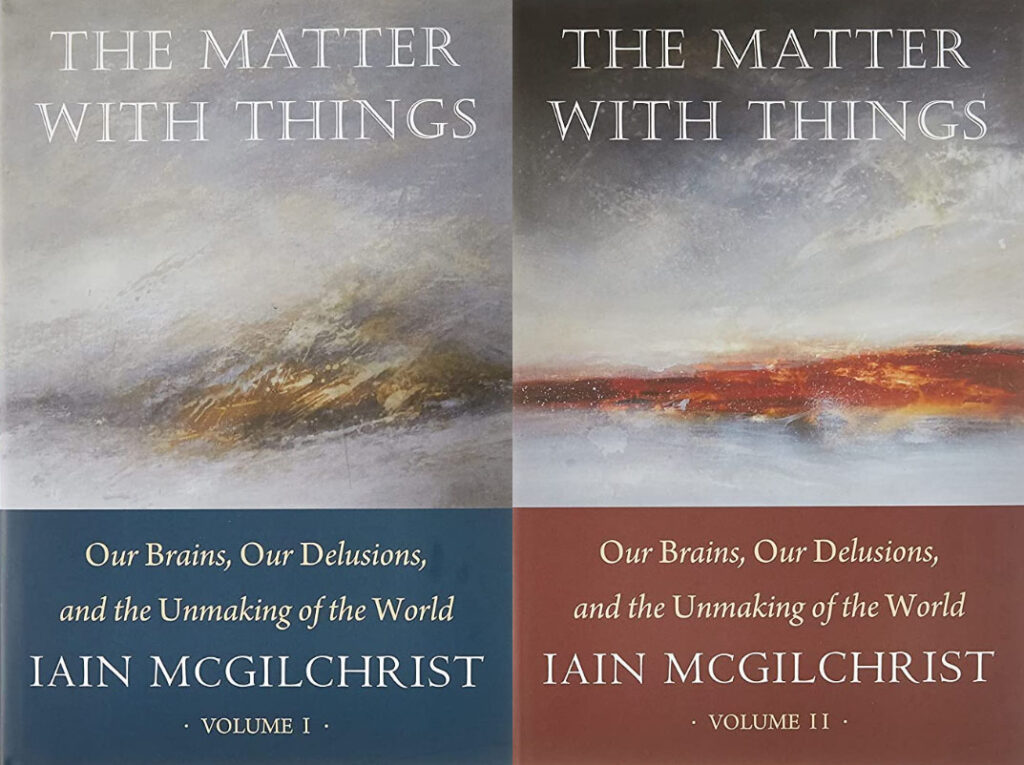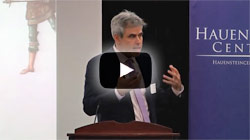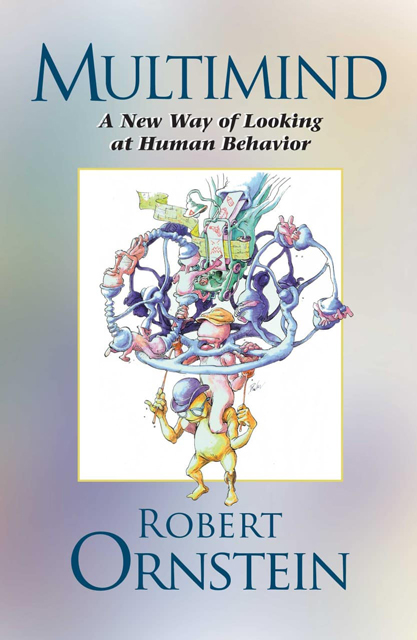Featured Book
Multimind
A New Way of Looking at Human Behavior
By Robert E. Ornstein
Contributing Writer
The author notes that since the publication of his breakthrough work “The Psychology of Consciousness,” the scientific understanding of the brain has become more detailed and specific. Rather than confining our understanding to two minds: the rational mind, dependent upon predominantly left hemisphere processes and the intuitive mind, dependent upon the right hemisphere, Ornstein suggests that it is more useful to view the mind as a changeable conglomeration of separate, special-purpose “small minds” that “wheel” in and out of consciousness to handle specific tasks.
This provocative book challenges the most-popularly held conceptions of who we are. In it, psychologist and renowned brain expert Robert Ornstein (1942 – 2018) shows that, contrary to popular and deep-rooted belief, the human mind is not one unified entity but, rather, is multiple in nature and is designed to carry out various programs at the same time. Using many examples, he presents compelling physiological, psychological and evolutionary evidence for this, showing that our consciousness is, by necessity, extremely limited, with only a small portion of the mind operating “on the main stage” at any given time. That’s why our minds are so easily altered and our judgments shift from moment to moment, triggered by such factors as the way in which a problem is framed, and what portion of the mind is operating at a given instant. It’s also why we have such trouble achieving a real understanding of other people, much less of our own selves, and why we often work against our best interests by making misguided choices, decisions and responses in so many areas of our lives.
Multimind is eye-opening and constructive. After making a persuasive case that every person’s “I” or “me” is not what they thought it was, the book goes on to consider the crucial question of who, then, is really in charge of the mind – and to show that we can achieve a greater measure of self-understanding and control by realizing the multiple nature of our own minds and observing our own inconsistencies and shifts of mood.
Old Views of the Mind Are Too Limited
Ornstein contends that contemporary Western culture’s emphasis on rational thought as the ultimate function of the mind is way too limited and is likely due to the fact that scientists, like every other professional group, are selected based on their own abilities – in this case, on their academic qualities. Thus, scientists assume that everyone is like them, that the mind was created only for thinking and reasoning, and that the ideal mind should be highly verbal and intellectual. As a result, they largely ignore the many other dimensions of a human being – such as feelings, personal concerns, bodily needs and artistic abilities. Science’s limited conception of the human mind is the dominant view of the Western intellectual tradition. Competing with it is the Freudian view, which focuses on unconscious drives; but this view is inadequate as well. “We are determined by a much more complex system than Freud knew,” Ornstein writes, explaining that we’re the “prisoners” of far more than just our sexual and aggressive drives.
There are many competing views on the nature of the mind which Ornstein says are the results of a “primitive and tentative” understanding. He likens this to the thinking displayed in the proverbial Eastern tale “The Elephant in the Dark,” in which several people who’ve never seen an elephant grope one in a dark stable and then return to their village, where each authoritatively reports a different description (“an elephant is long and hose-like,” says the man who had only felt the animal’s trunk; “it’s like a fan,” say the one who’d only felt its ears; etc.).
The goal of Multimind, then, is to present a more complete picture of the whole elephant, so to speak – although Ornstein realizes that science’s knowledge of the mind is not yet advanced enough for such a picture to be definitive, Still, he says, it’s clear that the mind is not a single, unified entity, but rather is a changeable conglomeration of separate, special-purpose “small minds” that are “wheeled” into consciousness for specific tasks. He notes that we each possess and employ a particular combination of these “minds” and suggests that they are what we mean by our “personality”.
Keep It Simple and Consistent
Ornstein explains that our mental operating system (MOS) simplifies and makes sense out of the enormous amount of information – internal as well as external – constantly bombarding us. To ensure our safety during the conditions that prevailed on Earth long ago, our minds evolved to give us what might be called a “short-term view” of our surroundings, which enables us to respond quickly and effectively in the kinds of crises our ancestors faced back then. Although very effective for that purpose, this kind of mental processing greatly oversimplifies what’s really out there. The stimuli coming at us from the outside world are considerably reduced by our senses, which only transmit to the brain a tiny fraction that’s deemed important to our survival. The MOS “creates” the world for us based on its interpretation of this information, reducing the outside world’s complexity to standardized items that are easy to act on.
At the most elementary level, basic neural processes in the brain transform incoming information from its raw form (e.g., electromagnetic radiation in the visible band) to a form that’s manageable by the brain (e.g., neural firing by the retina and visual system). This transformed information is then converted into stimuli (e.g. a tiger approaches) from which the brain extracts meaning. The various mental modules that do all of this are fixed rather than flexible and provide the basic information for the various talents we have. By “talents” the author refers to certain well-defined anatomical centers that are at the next level of neural organization beyond the modules and are to some degree inherited. These talents – which involve such functions as activating, feeling, informing, moving, talking, knowing, calculating and governing– are “brighter” and more flexible than the modules and can override automatic analyses in order to adjust to new circumstances.
But we don’t have access to all of our talents at once; rather, our consciousness is limited to only a few items at a time – which is why we have a large number of small minds that are wheeled in and out of consciousness to handle different situations. And these minds operate as separate entities, even to the point where something learned in one small mind may not be learned throughout the rest of the mind; so it’s really a matter of wheeling in the right small mind for the task at hand. Underlying the small minds are several fixed “policies” that influence activities at all levels and include sensitivity to recent information, emphasis on vivid information, simplification by comparison and focus on meaning.
In summary, the mind is a complex structure that contains “modules,” “talents,” and “policies,” any of which can act independently of each other and may well have different priorities.
What Just Happened?
The MOS evolved to be especially sensitive not only to recent information, but also to sudden changes, and it constantly judges by making comparisons and assessing everything by its relevance to us. We’re usually unaware of the MOS’s behind-the-scenes machinations, though. When something enters the mind, several small minds decide whether it goes into consciousness or into “cold storage.” They do this using “shortcuts” that are simplifying strategies we use to quickly make judgments and solve problems. One characteristic of these shortcuts is that they attribute a disproportionate amount of importance to information that’s especially vivid, which gives vivid information a disproportionate influence on our judgment. Television can magnify this effect, which explains why, as studies have shown, televised violence increases the incidence of real-life violence. Another problem with these shortcut strategies is that they can sacrifice accuracy for speed; e.g., using the concept of representativeness (the judgment that something is typical of other things in its category) can lead to the mistake of overgeneralization. “We are built to respond simply and quickly,” Ornstein writes. “Our judgment process operates by a set of fast paths.” And those paths don’t always lead to a true picture of what’s really going on.
The mind evolved over a period of 500 million years and is a kind of collage made up of many fixed and innate routines, circuits and priorities that each developed to serve a specific short-term purpose long ago, and that are “piled atop” one another in the order in which they developed rather than being arranged for maximum efficiency. Because the conditions under which the mind evolved are not the conditions we live in today, writes Ornstein, “our mental structure is based on primitive processes of judgment … appropriate to an era long gone.” As a result, even such complex and fraught matters as nuclear-weapons policy are funneled through an ancient mental system, sometimes with catastrophic consequences. “We hold nuclear weapons with the same hands [that were] designed to guide one spear, and with a mental system [that was] designed to operate in a world populated by a few million people, not several billion,” Ornstein writes. “So we are almost inevitably ‘designed’ to have the wrong reactions.” That’s why we keep on making the same mistakes over and over again, “because of the independent ‘pieces of mind’ that are often wheeled in without our conscious control.”
So the mind is not static; rather, it wheels different segments into play that are designed for very specific and limited purposes – such as a comparison program that evolved for judging the weight of objects, or an innate emotional routine that evolved for acting on anger. But these separate mental programs sometimes overstay the situation for which they were wheeled in, resulting in misjudgments and inappropriate behavior – as when, angered by a setback at work, we come home in a foul mood and take it out on our spouse. Nevertheless, Ornstein emphasizes, all of these separate mental components “are us.” Our problem as individuals is that we usually act unconsciously and automatically, without knowing which one of our many small minds is operating. And this affects not just simple emotional reactions, but also higher-level mental activities, such as creative thought, judgment and language.
The MOS’s usual strategies of simplification and exclusion of information cause us to continually overemphasize and overreact to the small amount of information that we allow to enter our consciousness. For example, when news media report a murder somewhere, we think of the world as a more murderous place; and when they report that a celebrity has breast cancer, breast cancer becomes a national concern. We search for a simplifying pattern in our perceptions of the world but are usually unaware of the MOS policies that are being wheeled into action. In a sense, says Ornstein, we’re like paleontologists who, based on only a few fossilized bone fragments, try to “flesh out” what a long-extinct creature looked like.
Compared To What?
And we don’t realize that our opinions can change wildly from moment to moment, depending on what happens to us. We’re constantly using comparisons to assess things, and our standards of comparison are constantly shifting. Thus, for example, people who won the lottery are found, one year later, to be no happier than nonwinners, because, as Ornstein puts it, “instead of being delirious that they can afford a new car, they begin to complain about the standard of service at the Jaguar dealership.”
One common type of shortcut the mind makes is to wheel in a comparison program in order to make judgments. But the fact that this program wasn’t “designed” for complex social judgments makes us much easier to influence than we think we are – especially because we’re always comparing our behavior to that of other people. As an example, Ornstein cites experimental evidence showing that someone sitting in a room with five other people is less likely to answer a cry for help from a person in another room than is someone who hears the same cry for help while sitting in a room alone.
Because the mind is a coalition of competing entities rather than a unified whole, we usually don’t even know what we think or believe. That’s why we’re subject to the psychological phenomenon known as cognitive dissonance, which occurs when the mind tries to reduce the disparity between what its different pieces are thinking or doing. It’s been shown, for example, that getting us to say something in favor of a particular cause will almost always make us believe more strongly in that cause, because our mind works to reduce the dissonance between what we had really thought about the cause (which we might have been apathetic about or even opposed to) and what we were induced to say about it (which was positive). Cognitive dissonance is a tool of manipulation that’s well-known among salespeople, as is our tendency to be affected by the level of comparison (e.g., when we’re at a dealership to buy a new car, one that costs $30,000 doesn’t seem as expensive if we’re first shown one that costs $50,000).
Once information gets into our consciousness, it can affect our current and subsequent experiences. For example, having a minor argument with someone can color our outlook on everything for the rest of the day, because we’re unaware that anger has been wheeled into consciousness and is now in control. Studies also show that we can be influenced by ideas we know aren’t true, and that our beliefs persist even after they’ve been proved wrong. “We consistently underestimate the degree to which we can be manipulated,” writes Ornstein, “in part because we do not understand that very different pieces of our mind may be making the decisions, pieces that are different from the cold, sober, rational estimator of how we will act.” As an example, he cites a well-known experiment on obedience to authority, which showed that people who considered themselves to be kind and empathetic were induced to administer what they thought were potentially fatal shocks to others.
Our Experience of Unity Is an Illusion
Our built-in delusion that we’re consistent and single-minded results in all kinds of personal and professional misjudgments of other people. We expect consistency and can’t conceive of behavior as being random or multiply determined, so we perceive it as coherent and meaningful, even though that’s often far from the case. Although we only have partial information about other people, we somehow form a coherent impression of them, typecasting them based on a single characteristic (such as “nice” or “aggressive”), when in fact everyone is far more complex than that. And we exclude evidence that doesn’t fit in with our view.
What’s more, traits that we seem to regard as more important than others dominate our impressions of people – which can result in bizarre misperceptions, such as our demonstrated tendency to perceive a lecturer as taller if we think he’s a professor than if we think he’s a student. We’re far better at assessing things, which are stable, than we are at assessing people, who are much more complex; yet we use the same kinds of prototypes in judging people as we do in judging colors, brightness and objects. “We do not know ourselves or each other. Our view of others is partial, oversimplified,” Ornstein writes. “And our own selves are hidden from us as well.”
That’s because each of us is not a single person, but rather consists of many different “selves,” each of which is specialized to handle different chores. “The unity we experience,” Ornstein writes, “is an illusion.” And because the mind isn’t unified, something within us often has to calculate or infer our own thoughts and feelings, based on continued observation of our behavior. As an example, Ornstein cites an instance when he was about to give a lecture but became uncharacteristically nervous – until he realized that the reason his hands and legs were trembling was that the building’s air conditioning had just switched on and was causing the whole room to vibrate. Upon realizing that it was the room, and not him, that was shaking, he instantly relaxed, because the physiological symptoms he associated with nervousness were seen to be due to something entirely different.
Our oversimplified mental routines have colored the way psychologists view and assess intelligence, which is generally thought of as a fixed quantity that can be measured by a standard test, when in fact it’s a wide assortment of talents and is very much situation-specific. It would be more accurate, Ornstein says, to view people as being made up of a variety of abilities, rather than ranking them on a comparative scale of “general intelligence.” What’s more, he points out, different cultures have very different approaches to training and cultivating the mind. “The assessment of children based on the single IQ score has caused more destruction and pain than any other product of our simple-minded approach,” Ornstein contends, adding that it would be far better to develop tests that identify a child’s specific talents, and to enrich the environment of children who are deprived.
The Multimind View Helps Us Understand Ourselves and Others
So how can Multimind’s view of the human mind help us improve our understanding of ourselves and others? One way, says Ornstein, is by helping us realize that other people are more complex and inconsistent than we perceive them to be and not allow our own internal judging mechanism to be overly swayed by the small pieces of someone’s mind. “Saying to yourself: ‘Here swings in that small mind again; it’ll be gone soon,’ might be a help sometimes in waiting things out,” he writes.
That may seem like a hopeless task, but evidence indicates that the capacity of consciousness may be greater than we’ve assumed, and that our consciousness can be developed through training. “Conscious development probably consists of attaining a genuine measure of understanding and control over the wheeling and dealing mental system: being able to choose which of the small minds (if any) operates at any moment,” Ornstein writes. It can enable us not only to recognize that we have a great many different and largely unsuspected talents and abilities, but also to “be more able to respond to life as it really is, not as we would reduce it to fit one small-minded view.”
But to do this, “we must be able to learn and train ourselves in how we think, how our minds are structured, and how we can overcome the innate limitations and biases of mind.” Interestingly, the way to do this was known to our ancestors and is still a part of some traditions today. Some of these traditions – such as Sufism, which uses the term “commanding self” to describe the unfettered conglomerate of small minds that seem to operate on their own accord and run roughshod over our lives – have devised various techniques to put the horse in front of the cart, so to speak, and make possible a greater self-understanding.
“People can learn to observe the automatic selection of a small mind and observe which factor – external, food, personal, social, environmental – is really causing a given reaction,” Ornstein writes, adding that such self-observation seems to provoke change in the MOS, so that “the fixed links between action and reaction are loosened, leaving room for some serious choices and redirection of the mind.” He notes that the ideas that man is “fallen,” “blind,” “asleep” or an “automaton,” which are found in the fields of religion and philosophy, are consistent with Multimind’s view that we’re “capable of mental development beyond the norm but usually are the prisoners of the automatic selection routines of the MOS.” The “observation mind” that can help us achieve this development is usually dormant but can be developed through training and practice, so that we become conscious of our multiminds and begin to run them rather than have them run us.
But the mind’s limits and its potential are both part of the human mental system. “We are capable of great understanding and are also oblivious to important information, making misjudgments and mistakes,” Ornstein states. The key is to realize that the strategies our mental system evolved in prehistoric times are unsuitable for much of modern life, and that the belief that we’re whole, stable, rational thinkers is just a self-deception. “We … are ‘flying without instruments,’ judging the operations of government, airplanes, medical interventions, without the benefit of training the part of us that can properly judge,” Ornstein writes. “We must learn to trust our personal judgments less than we do and become aware of the thought processes that come as standard equipment with our mental operating system.”
“Our understanding of the nature of the mind is, I believe, the current barrier to solving many problems that are now seen to have only political or administrative solutions,” writes Ornstein. “We are a more extraordinary animal than we think, but also a more dangerous one; we are closer to destruction and to transcendence than we know, in a race with the different pieces of our selves … but we can change more than we might have dreamt … The first step is in understanding the multiple nature of our mind.”
Robert Ornstein was the author of more than twenty books, among them New World, New Mind, The Right Mind, The Evolution of Consciousness, and the best-selling The Psychology of Consciousness, now in its 4th edition. His final book, which he considered his most important, was the groundbreaking God 4.0: On the Nature of Higher Consciousness and the Experience Called “God.” He was the founder of the Institute for the Study of Human Knowledge, which is responsible for this Human Journey website. (See also: www.robertornstein.com.)

The Matter with Things
Iain McGilchrist
One of McGilchrist’s central points is that our society is one in which we rely on representations of the world as our way of knowing it. Scientific theories expressed in mathematical form, economic models, photographs – all re-present the reality they purport to describe.

Beyond Culture:
Edward T. Hall and Our Hidden Culture
Report by John Zada
Edward T. Hall, after spending his early adulthood working and travelling among non-Anglophones, both in the United States and in other parts of the world, became cognizant and fascinated in the deeper layers of culture that he claimed lie buried beneath those more obvious forms.
In the series: Our Mind in the Modern World
- An Ancient Brain in a Modern World
- Our Unconscious Minds
- Maintaining a Stable World
- The Multiple Nature of Our Mind
- Connecting with Others
- Morality’s Long Evolution
- Unconscious Associations
- The Brain’s Latent Capacities
- God 4.0
- Thinking Big
- Social
- The Weirdest People in the World
- The Righteous Mind
- New World New Mind
- Moral Tribes
- The Mountain People
- The Matter with Things
- Humanity on a Tightrope
- Fluke by Brian Klaas
- Beyond Culture
Further Reading »
External Stories and Videos

Watch: Jonathan Haidt – The Righteous Mind: Why Good People are Divided by Politics and Religion
Jonathan Haidt Hauenstein Center Talk
Why can’t our political leaders work together as threats loom and problems mount? Why do people so readily assume the worst about the motives of their fellow citizens? In The Righteous Mind, social psychologist Jonathan Haidt explores the origins of our divisions and points the way forward to mutual understanding.

